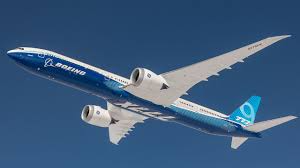Boeing’s annual free cash flow target of $10 billion may be delayed by about two years to 2027-28 and it would have to raise $30 billion before developing a new aircraft, Wells Fargo said and downgraded the stock.
Shares of the Dow component fell more than 7% after the bell, amid broad market declines to a near one and a half year low on Tuesday, after lead analyst Matthew Akers pushed Boeing to “underweight” and cut the target price to $119, a 32% downside to the last closing price.
“Boeing carries about $45 billion net debt and (it) must address this before it kicks off the next aircraft development cycle,” Akers said, adding that cutting the debt would consume its cash flow through 2030.
The planemaker is working to recover from a crisis sparked by a mid-air accident in January that led to regulatory curbs on its 737 MAX production, which has pressured its free cash flow.
“Given a likely new aircraft launch in the next few years, Boeing will need to shore up the balance sheet sooner,” said Akers, who is rated three out of five stars for estimate accuracy on LSEG Workspace.
“We estimate a roughly $30 billion equity raise to get back to zero net debt by 2027.”
In its response, Boeing referred to CFO Brian West’s July earnings call in which he said the planemaker would manage its balance sheet in a prudent manner and would supplement liquidity as needed.
The company had in 2022 outlined annual cash flow target of $10 billion by 2025 or 2026.
Boeing’s free cash flow per share could grow to about $20 this decade if it were to delay new planes for “several more years” and just pay down debt, Akers said, but that would risk ceding market share to rival Airbus SE in the long run.
Boeing’s shares have lost nearly 38.2% of their value this year.



